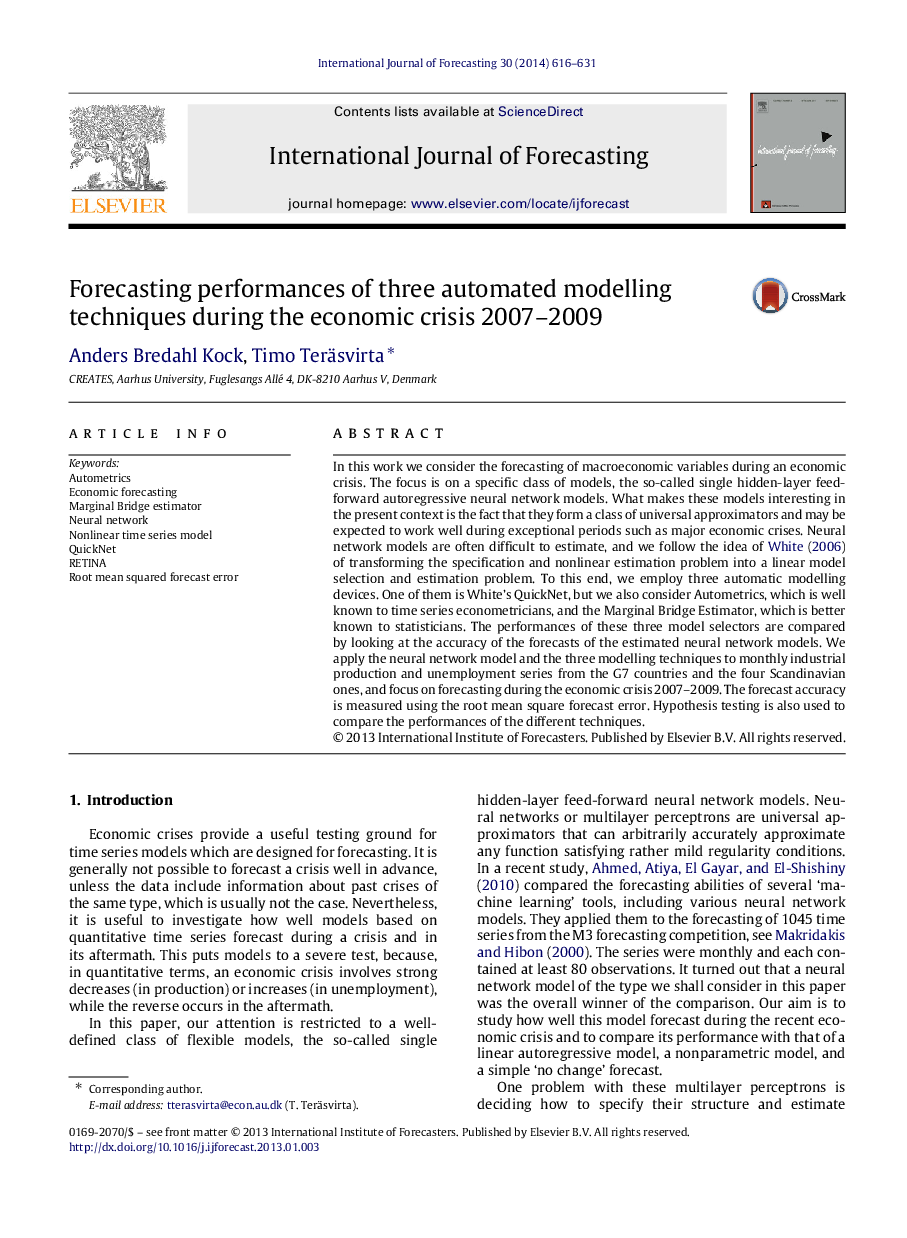| Article ID | Journal | Published Year | Pages | File Type |
|---|---|---|---|---|
| 998097 | International Journal of Forecasting | 2014 | 16 Pages |
In this work we consider the forecasting of macroeconomic variables during an economic crisis. The focus is on a specific class of models, the so-called single hidden-layer feed-forward autoregressive neural network models. What makes these models interesting in the present context is the fact that they form a class of universal approximators and may be expected to work well during exceptional periods such as major economic crises. Neural network models are often difficult to estimate, and we follow the idea of White (2006) of transforming the specification and nonlinear estimation problem into a linear model selection and estimation problem. To this end, we employ three automatic modelling devices. One of them is White’s QuickNet, but we also consider Autometrics, which is well known to time series econometricians, and the Marginal Bridge Estimator, which is better known to statisticians. The performances of these three model selectors are compared by looking at the accuracy of the forecasts of the estimated neural network models. We apply the neural network model and the three modelling techniques to monthly industrial production and unemployment series from the G7 countries and the four Scandinavian ones, and focus on forecasting during the economic crisis 2007–2009. The forecast accuracy is measured using the root mean square forecast error. Hypothesis testing is also used to compare the performances of the different techniques.
